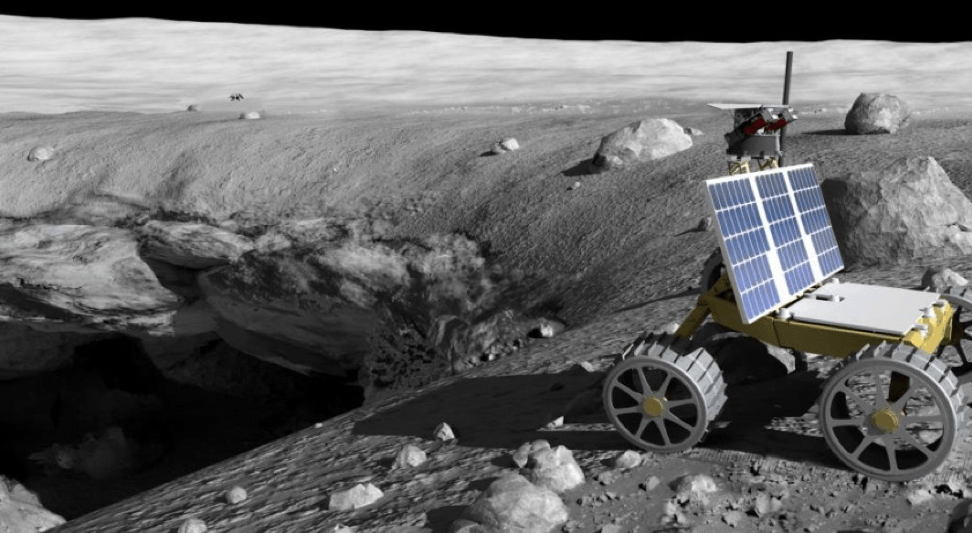NASA
Updates #12-20 for Peregrine Mission One

| Update #20Astrobotic has positioned the Peregrine spacecraft for a safe, controlled re-entry to Earth over a remote area of the South Pacific. The team has been continuously monitoring our re-entry analysis with NASA, which indicates a re-entry path over the indicated area below, with no anticipated hazards. A safe re-entry is our top priority, so the team developed a two-step maneuver to move the spacecraft and change its projected trajectory. The first step required a main engine burn. Due to the propulsion anomaly, it was impossible to operate the main engines normally. As such, we developed a plan to fire the main engines with a series of very short burns. We conducted a test burn of all five main engines. Each pulse was spaced out to avoid overheating, allowing our mission control team to monitor results and the spacecraft’s status after every burn. Following this, we performed a series of 23 small main engine burns. Secondly, we adjusted the spacecraft’s attitude so the force induced by the leaking propellant shifted us towards the South Pacific Ocean. The result of these two maneuvers is the ellipse in the graphic shown. The procedures the team executed were to minimize the risk of debris reaching land. Astrobotic continues to work closely with NASA and other relevant government authorities to keep everyone informed and to solicit feedback as appropriate. Peregrine has been operating in space for 9 days and 16 hours. It is 139,000 miles (223,700 km) from Earth. We expect re-entry to occur at approximately 4pm Thursday, January 18 (US Eastern time). As re-entry is now targeted for Thursday, we are moving our previously scheduled media telecon to Friday, January 19at 1pm (US Eastern time) to provide a comprehensive mission update. |
| Update #19 |
| The Peregrine spacecraft continues to be responsive and stable and has been operational in space for 8 days and 16 hours. The mission team is continuously monitoring the spacecraft’s trajectory back to Earth. We remain in contact with our U.S. Government partners to ensure as safe a re-entry path as possible. As a reminder, Peregrine reached apogee on Saturday and is now about 183,000 miles from Earth. |
 |
| Update #18 |
| Peregrine has been operational in space for 7 days and 13 hours. The spacecraft continues to be responsive, operational, and stable, and remains on its previously reported trajectory toward Earth’s atmosphere. The propellant leak caused by the anomaly has practically stopped. The team continues to work with NASA and U.S. Government agencies to assess the final trajectory path in which the vehicle is expected to burn up. Peregrine is now about 218,000 miles away from Earth. This photo was taken in space today, with a camera on one of Peregrine’s payload decks. This is the same camera view as the first photo we received from the spacecraft on January 8, 2024. |
| Update #17 |
| For 16 years, Astrobotic has been dedicated to making the Moon accessible to the world. The responsible preservation of the cislunar space environment for all is top of mind as we complete this mission. Since the Peregrine lunar lander’s anomaly occurred 6 days ago, we have been evaluating how best to safely end the spacecraft’s mission to protect satellites in Earth orbit as well as ensure we do not create debris in cislunar space. Working with NASA, we received inputs from the space community and the U.S. Government on the most safe and responsible course of action to end Peregrine’s mission. The recommendation we have received is to let the spacecraft burn up during re-entry in Earth’s atmosphere. Since this is a commercial mission, the final decision of Peregrine’s final flight path is in our hands. Ultimately, we must balance our own desire to extend Peregrine’s life, operate payloads, and learn more about the spacecraft, with the risk that our damaged spacecraft could cause a problem in cislunar space. As such, we have made the difficult decision to maintain the current spacecraft’s trajectory to re-enter the Earth’s atmosphere. By responsibly ending Peregrine’s mission, we are doing our part to preserve the future of cislunar space for all. Despite the propulsion system issue, the Astrobotic Mission Team has worked tirelessly to stabilize the vehicle, turn on all active payloads, and enable the collection of payload data. The spacecraft has been operating in space for 6 days and 16 hours, and Peregrine continues to leak propellant, but now at a very slow rate. Yesterday afternoon, we test fired one of the main engines for the first time. We achieved a 200 millisecond burn and acquired data that indicated Peregrine could have main engine propulsive capability. However, due to the anomaly, the fuel to oxidizer ratio is well outside of the normal operating range of the main engines making long controlled burns impossible. The team projects that the spacecraft has enough remaining propellant to maintain sun pointing and perform small maneuvers. Astrobotic designed and built hardware, avionics, software, and system architectures that have all performed as expected in space. All payloads designed to power on and communicate did so, and even achieved science objectives. While we believe it is possible for the spacecraft to operate for several more weeks and could potentially have raised the orbit to miss the Earth, we must take into consideration the anomalous state of the propulsion system and utilize the vehicle’s onboard capability to end the mission responsibly and safely. Peregrine will soon return to Earth’s atmosphere and the vehicle is now about 234,000 miles away. We are working with NASA to continue updating and evaluating the controlled re-entry path of Peregrine. We do not believe Peregrine’s re-entry poses safety risks, and the spacecraft will burn up in Earth’s atmosphere. We are validating this through analyses in collaboration with the U.S. Government. We will continue to operate the spacecraft and provide status updates through the end of the mission. “I am so proud of what our team has accomplished with this mission. It is a great honor to witness firsthand the heroic efforts of our mission control team overcoming enormous challenges to recover and operate the spacecraft after Monday’s propulsion anomaly. I look forward to sharing these, and more remarkable stories, after the mission concludes on January 18. This mission has already taught us so much and has given me great confidence that our next mission to the Moon will achieve a soft landing,” said Astrobotic CEO, John Thornton. |
| Update #16Over the last week, Astrobotic’s Mission Control Center has been tracking Peregrine’s trajectory. Our analysis effort has been challenging due to the propellant leak, which has been adding uncertainty to predictions of the vehicle’s trajectory. Our latest assessment now shows the spacecraft is on a path towards Earth, where it will likely burn up in the Earth’s atmosphere. The team is currently assessing options and we will update as soon as we are able. The propellant leak has slowed considerably to the point where it is no longer the team’s top priority. A reminder that a soft landing on the Moon is not possible. We have now been operating in space for 5 days and 8 hours and are about 242,000 miles from Earth. |
 |
| Update #15Peregrine remains operational at about 238,000 miles from Earth, which means that we have reached lunar distance! As we posted in Update #10, the Moon is not where the spacecraft is now (see graphic). Our original trajectory had us arriving at the Moon on day 15 post launch. Our propellant estimates currently have us running out of fuel before this 15-day mark — however, our engineers are still optimistic about extending Peregrine’s life expectancy. With Peregrine operating in a stable configuration and a teleconference imminent, we will post an update tomorrow, but will be slowing down our update cadence for now. Thank you again for the words of support we’ve received for our team. |
 |
| Update #14Peregrine has now been operational in space for more than 4 days. The spacecraft remains stable and operational, and is currently in a planned loss-of-signal period for about another hour and a half. The leak rate on Peregrine has continued to slow, and the spacecraft is estimated to now have 52 hours of propellant remaining. Our engineers continue to work on solutions to extend life expectancy and there is growing optimism that Peregrine could survive much longer than the current estimate. The payload teams continue to operate and receive power and telemetry from their instruments. Below is a video from the moment the COLMENA payload team began receiving data confirming their payload is now the first Mexican instrument to operate in cislunar space. (Credit: UNAM and Milenio) |
 |
| Update #13Since receiving power and telemetry, the Iris Rover payload (pictured) has sent a message from space (pictured). NASA has also released a preliminary science assessment on blogs.nasa.gov: “Two of the payloads, NSS and LETS, are making measurements of the radiation environment in interplanetary space around the Earth and the Moon. The two instruments are measuring different components of the radiation spectrum, which provide complementary insights into the galactic cosmic ray activity and space weather resulting from solar activity. This data helps characterize the interplanetary radiation environment for humans and electronics.” We currently estimate that the spacecraft has about 48 hours of propellant remaining, which is a significant improvement from yesterday. Our estimates for propellant life expectancy have been changing because the rate of the leak has slowed more than anticipated. A slowing leak rate is expected as the pressure drops, but there may be some change in the size of the propulsion system’s rupture as the pressure decreases or some other factor making it difficult to predict. Peregrine has been operating in space for 3 and a half days. It is now 225,000 miles from Earth, which is 94% of lunar distance. |





